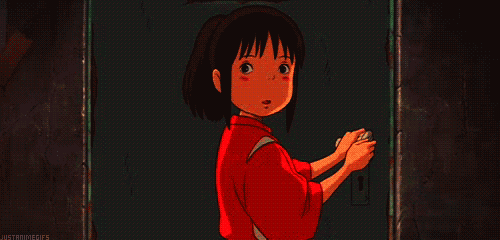Most people who are interested in Japanese already know, that hello in Japanese is “konnichiwa”. While this is correct, you would not normally greet someone with this, especially close friends. You would actually use it to greet strangers or in formal situations but, even though it is formal, “konnichiwa”, the well-known hello in Japanese, would not normally be used when greeting colleagues, as it is not considered polite.
There are different social hierarchies and contexts where you would use different greetings accordingly and this is due to Japanese culture being deeply rooted in the heart of the language, saying hi in Japanese is not that straightforward. So, there are various forms of Japanese greetings that are appropriate for different situations.
This article will show you the different kinds of Japanese phrases for general greetings, greetings for specific times and situations, other useful phrases, and farewell phrases for you to have a better understanding of how to say hello in Japanese. Before moving on, you can have look at our article about Japanese characters to have an easier time recognizing characters! Also, if you are currently using your phone to learn Japanese, we have an article on the best apps to learn Japanese.
 Source: Giphy
Source: Giphy
Table of Contents
General Ways to Say Hello in Japanese
Here are some general greeting phrases that can be used at any time of the day without having to worry about specific times or situations. These can be a simple “Hi”, “Hello”, “Hey” or others; check them out below to see and listen to them to learn how to say hi in Japanese
1. “Hello” – こんにちは (Konnichiwa)
We hear Konnichiwa more often than other greetings in Japanese media, so we might think it’s the normal and standard greeting, but it actually isn’t. It’s mainly used in semi-formal situations, like in an office or workspace. So you would not really use this hello in Japanese with friends, that would be awkward!
 Source: iStock
Source: iStock
Konnichiwa also means “good afternoon” in Japanese, and so you would actually use it mainly in the afternoon.
2. “Welcome!” – いらっしゃいませ (Irasshaimase)
You would hear this greeting when you enter a store or a restaurant in Japan. Irasshaimase means “Welcome” for store guests. But this is not what you would say to someone visiting your home. If someone comes to your home, they would say お邪魔します (Ojama shimasu), meaning “I’m sorry to bother you.” You, as the host, would reply “welcome” as どうぞ (douzo), or “please, after you,” or “come in,”.
 Source: iStock
Source: iStock
3. “Hey”- おす (Osu)
Osu is a more informal and masculine greeting. It is used when you already have the person’s attention. You could also use it to say “Yes, sir!” in certain situations.
It is usually used between 2 men, although sometimes women may use it as well. But men typically do not use it with women. But not to worry ladies, a more feminine expression is coming up next.
4. “Yoohoo” – ヤッホー (Ya-ho-)
This is a more casual greeting, between young children or close friends. It’s a more feminine greeting usually between girls. You could also use ヤッホー which is another exclamation type of greeting used to get the attention of a close friend or a kid. Think of it like saying “Yoohoo!” loudly and waving for attention.
 Source: Tenor
Source: Tenor
5. “Hello” (on the phone) – もしもし (Moshi moshi)
This special greeting is used only on the phone. It comes from the verb 申す (mousu), a version of “to say.” Important note is that “moshi moshi” is informal. In business situations, you’d answer the phone with はい (hai, “yes”).
6. “I’m back” – ただいまー (Tadaima-)
Tadaima is the greeting that you say when you get back home after you’ve been out. It means I’m back or I’m home.
7. “Hey” – おーい! (Ōi!)
This is a very casual greeting. You would use this to get somebody’s attention, for example, if you want to say hi to a friend who you saw on the street.
8. “What’s up?” – どうも(Dōmo)
Perhaps you’ve already learned dōmo as meaning something like ‘very’. Well, when it’s used by itself, it can be a very casual greeting, kind of like ‘sup‘. It sounds quite cool but extremely informal. Use carefully!
9. “Yo!” -よー!(Yo-!)
The same as English, you can greet a close friend informally with this but not anyone older than you. This one is also more masculine, but sometimes it is also used by females.
10. “Hello” – ハロー(Harō)
This casual greeting is simply the english word “hello” in Katakana. People use this to act cute or funny.
Hello in Japanese During Different Times of the Day
Here are some greetings that you can only use at specific times of the day. Also, be sure to check out our article on time in Japanese to have a better understanding.
1. “Good Morning” – おはようございます (ohayou gozaimasu)
Saying Good Morning (ohayou gozaimasu) is typically done in workplace situations, as it is a bit more formal. However, if you want to say it in a less formal way, you can shorten it by removing the “gozaimasu” and just say “ohayou”. This is a more common way of saying good morning to everyone. Sometimes you may hear friends exaggerate the sounds, and emphasize the “o” at the end like おはよー! To have more detailed information about this, check out our article about good morning in Japanese.
 Source: Tenor
Source: Tenor
2. “Good Afternoon” – こんにちは (Konnichiwa)
Yes, the famous Konnichiwa is back! As it directly translates to “Good Afternoon”, it is typically used as a greeting after 11am and in the afternoon, up until around 5 or 6pm.
3. “Good Evening” – こんばんは (Konbanwa)
In the evening, you can greet people by saying こんばんは (Konbanwa), as a polite and formal way to say “good evening.” You can tell this to basically anyone in both formal and informal conversations.
4. “Good Night” おやすみなさい (Oyasumi nasai)
When going to bed, you can say “ おやすみなさい “ (Oyasumi nasai) which directly translates to “Go take a rest.” With your friends and family, you can remove “nasai” which is what makes the phrase formal. Instead, say おやすみ- (Oyasumi), which is more casual.
 Source: Giphy
Source: Giphy
Other Useful Phrases to Say Hello in Japanese
Here are some other useful phrases to say after you have greeted someone, so that you can keep the conversation going:
 Source: iStock
Source: iStock
1. “My Name is” – 名前は___です。(Namae wa ____ desu.)
2. “Long Time No See” in Japanese – お久しぶりですね (O-hisashiburi desu ne)
If you have not seen someone in a few weeks, you would say お久しぶりですね, which means “Long time no see!” or “It’s been a while, huh?”. You can say this to anyone, such as friends or work colleagues. The “o” at the beginning adds respect, and the “ne” at the end means “huh” or “right?” Both can be removed to create a more casual phrase.
3. ““How are you?” – お元気ですか (O-genki desu ka)
You would say “How are you” in Japanese with お元気ですか. The “o” here is to show respect, and “ka” is the question particle. You can remove the “o” to make it more informal. In a reply, you can say “Genki desu”, where the word Genki (元気) means “energy” or “healthy,” so you would basically be asking “Are you healthy?”
4. “How’s it going?” – 調子はどうですか (Choushi wa dou desu ka)
The actual translation for this one is “What’s your condition?” but it’s used informally to ask “how’s it going” in Japanese.
 Source: iStock
Source: iStock
5. “Nice to Meet You” – はじめまして (Hajimemashite)
When you meet someone for the first time, its nice to start the conversation by saying はじめまして. This translates to “Nice to meet you.”
6. “Nice day, huh?” – いい天気ですね (Ii tenki desu ne)
This is a greeting that starts off by talking about the weather. It can typically be something like いい天気ですね (Ii tenki desu ne, “Nice weather, isn’t it?”) or 暑い / 寒い ですね (Atsui / samui desu ne, “It’s hot / It’s cold, isn’t it?”)
7. “What’s up?” – 最近どう (Saikin dō)
This is a casual and informal phrase used between friends. It basically means ”how have you been recently?” or ‘what’s up?‘ but it’s a casual form, used between friends.
8. “How was your day?” – 今日はどんな一日でしたか (Kyō wa donna ichi-nichi deshita ka)
This is a nice greeting for when you meet someone later in the day or evening and you want to hear about their day.
Phrases to Say When Leaving in Japanese
Once you say Hello to start a conversation, you must also know how to say Goodbye to end that conversation! So here are some phrases to say when you are parting ways with someone:

1. “Goodbye” – さよなら (Sayonara)
Sayonara (さよなら), was originally written in kanji as 左様なら (さようなら), which means “farewell”, but it is more common to see it written in hiragana in its shortened form sayonara (さよなら) which can also be written with a long “o” sound sayounara (さようなら). Both of them mean the same thing and are considered formal. Sayonara is typically used when you are not sure when you will see the person again or if you will be seeing them in a long time. The word can also mean “Goodbye Forever”, so it is not commonly used in daily goodbyes to people you will see again.
2. “See you tomorrow” – また明日 (Mata ashita)
Mata ashita is a casual goodbye word used when you will be seeing the same person the next day, like classmates in school or colleagues at work. Ashita (明日 / あした) means “tomorrow”. You can switch this with words like Raishuu (来週 / らいしゅう) which will then mean “next week”, or on New Year’s Eve, you can use Rainen (来年 / らいねん) to mean “next year”. This gives you many cool ways to say that you will see someone again.
3. “I’ll be going” – 行ってきます (Itte kimasu)
This phrase is used commonly at home. When people are leaving the house to go to school or work, they will say itte kimasu to let others know that they are leaving. The direct translation of Itte kimasu is “I will go and come back”. The typical response to this will be itterasshai (行ってらっしゃい / いってらっしゃい) meaning “Please go and come back”. Parents will commonly say this to their children when they leave for school and it can also mean “see you later”.
4. “I must go now” – もう行かなくちゃ (Mou ikanakucha)
This phrase is an informal way for you to say goodbye to your close friends. Ikanakucha has the word iku (行く / いく) which means “to go”.
 Source: Giphy
Source: Giphy
さよなら (Sayonara) and Good Luck with Your Studies
After learning how to say Hello in Japanese, you understand that the Japanese language is just as vast and deep as its culture. It has its own writing systems, contexts, and social classes that need to be considered from person to person. But this is what makes the language so deeply connected to its people. Learning Japanese greetings is just a drop in the ocean of what the language has to offer. To help you not get drowned in that, we have an article on how to learn Japanese.
This article should give you a leg up on your learning journey of the Japanese language. By understanding all of this article’s phrases for general and specific greetings, goodbyes, and other useful phrases for starting/ending a conversation; you are already one step ahead on your path to mastering and enjoying the wonder of Japan with its language and its culture! But, if you want to take the learning journey even further, be sure to read our article on online Japanese courses.
こんにちは (Konnichiwa) is a formal way of greeting in Japanese, but use it among your friends or families would be a bit weird.
おす (Osu) is a causal way to say Hello in Japanese. It is usually used among males. While for females, you will hear ヤッホー (Ya-ho-) quite a lot. These two are all for informal occasions. Never say it during the official occasions.
Moshi moshi is a very common way to answer phone in Japanese, but it is mainly used in informal occasion.
















